
What is Child Sexual Abuse?Any sexual activity between an adult and a child is sexual abuse. Sexual abuse may also occur between children when there is a significant age difference (usually 3 or more years) between the children, or if the children are very different developmentally or size-wise.Its not compulsory for sexual abuse to involve penetration, force, pain, or even touching. If an adult engages in any sexual behavior (looking, showing, or touching) with a child to meet the adult’s interest or sexual needs, it is sexual abuse. Child sexual abuse encompasses “contact” or “touching” and “non-contact” or “non-touching” actions.
Examples of abusive physical contact: involving touching. Touching a child’s genitals or private parts for sexual purposes. Making a child touch someone else’s genitals or play sexual games. Putting objects or body parts (like fingers, tongue or penis) inside the vagina, in the mouth or in the anus of a child for sexual purposes. Examples of non-contact sexual abuse: without touching.Showing pornography to a child. Deliberately exposing one’s genitals to a child. Photographing a child in sexual posesEncouraging a child to watch or hear sexual actsInappropriately watching a child undress or use the bathroom.In order to create an environment where children are safe from abuse we must face the uncomfortable reality that the people who are most likely to sexually assault a child are the people we believe we can trust with children.What Doesn’t Work to Protect Children from Sexual Abuse. Let me break the bubble for you. We can’t protect our kids by simply doing the following:
Trusting people based solely on their reputation or authorityAssuming schools and programs for children take comprehensive steps to protect childrenTreating ‘stranger danger’ education as an effective sexual abuse prevention strategy.the most prolific predators are often very well respected and trusted.
Not talking about sexual abuse with children to avoid scaring them.Those that perpetrate sexual abuse do not fit into any stereotypical demographic, in fact, the most prolific predators are often very well respected and trusted by their peers and the families whose children they are trusted with. The power given to these ‘elite’ predators only serves to continue a steady stream of victims, discourages disclosure from victims, and deters colleagues and other protective adults from reporting.
What Does Work:Being open and expecting others to behave in a way that reduces opportunity for abuse.Requesting information on screening of employees/volunteers, training for abuse prevention, policies to reduce risk and protocol for reporting.Accepting that the greatest risk to children will come from those who they know.Educating children to understand their bodies, and the concepts of consent and personal responsibility for one’s action.As protective adult’s it is our goal to minimize opportunity for abuse so that children are not put into a potentially abusive situation, and discourage potential perpetrators by speaking up when we witness a situation or behavior that makes us concerned for the safety of children.~Establish Rules
Children thrive on structure at a very early age. Just like nap and bedtime routines, teaching manners etc.,children appreciate and feel more secure when they know what is expected from them and others.Starting at the age of 2 years , you may begin to introduce the idea of what private parts are. How to explain: the areas of our body that are covered by a underwear, diapers, or a bathing suit. People’s private parts should be kept private – out of sight and touch of other people – which is why we cover our privates unless we’re washing ourselves.How to explain: the areas of our body that are covered by a underwear, diapers, or a bathing suit. People’s private parts should be kept private – out of sight and touch of other people – which is why we cover our privates unless we’re washing ourselves.
How to reinforce: When dressing or changing a diaper, we can say something like “time to cover up your privates. These are just for you, no one should look or touch your privates except when you need help to stay clean or get dressed.”
Bathing, using the toilet, dressing, and sleeping are times when people should have “privacy” – both children and adults. You may say, “Lets keep the bathroom door closed for the person(xyz) in there so they can have their privacy.”

-Appropriate & Inappropriate Touch: Good touch VS Bad touch.
Sometimes it is necessary for a person to touch or look at a child’s private parts, such as changing a diaper or applying cream, washing a young child at bath time, helping wipe after using the toilet, or at a doctor’s visit (with a guardian present & watching); these are appropriate touches. Inappropriate touches are when people try to touch, see, or show their own privates – they might rub, tickle, or grab, and it might tickle, feel uncomfortable, or hurt. Sometimes, people might try to play a “game” with private parts.Reinforce: Reinforce: It’s a rule: we do not tickle, look at, take pictures, or play games with each other’s private parts.
It helps to reinforce that respecting privates goes two ways: no one should look at our privates and we should not look at other people’s privates. Teaching children about body safety not only helps keep them safe, it also helps them to respect others as well.-It’s a Rule: hugs, kisses, and being touched is always optional
Actions speak louder than words. When a child is forced to be affectionate or intimate with someone they’re uncomfortable with, even if we believe they’re perfectly safe (may it be a family member), it sends a message that they are not allowed to trust their instincts, and we will expect them to prioritize the wants of others over their own feelings.Without being disrespectful if they dont want to be touched, respect that. Promoting other ways to be friendly – saying hello, waving hi, high-five, or a fist-bump can help children understand the importance of recognizing someone without compromising their personal space.
-A doctor’s visit, when it is necessary for their health to be examined, is an exception. Depending on their age, we can explain that it’s part of a doctor’s job to check and make sure their privates are healthy. We should always be present in the room and not just physically, but also paying attention. Survivors have shared with us how their own doctors touched them inappropriately while their parents were sitting in the very room, reading a magazine. If a doctor asks that we leave the room, we have a right to understand why, to challenge that request, and expect a nurse or assistant be present in our absence to provide oversight.
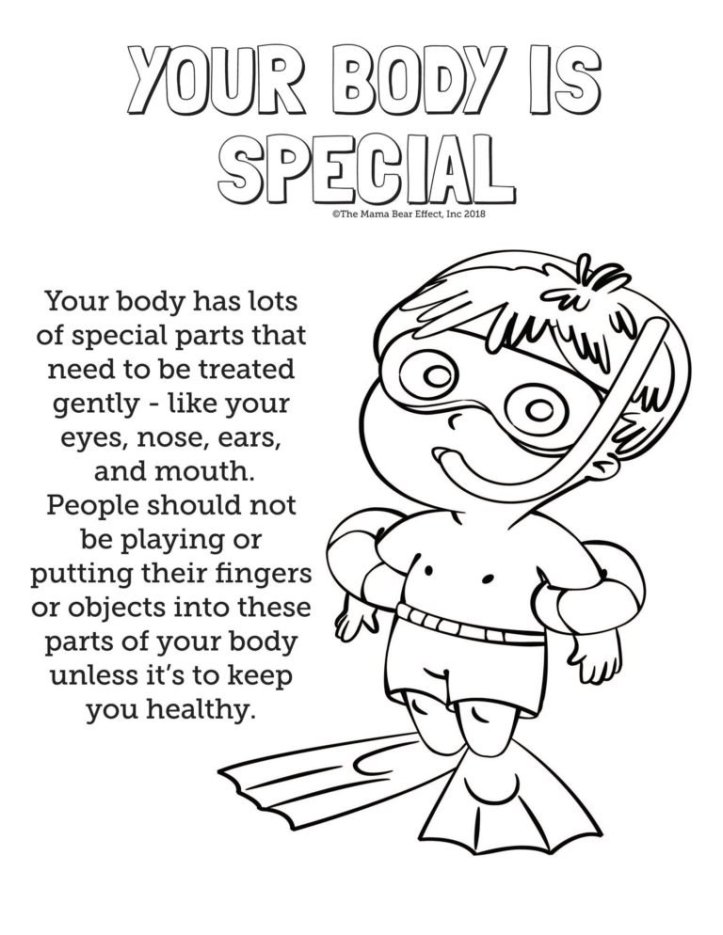
-It’s a Rule: No secretsEven convicted abusers have admitted being surprised by how easy it was to get a child to keep sexual abuse a secret. Some abusers will begin grooming children by building their bond and testing them to keep small secrets, “don’t tell your parents I gave you this,”, “this is our little secret” and then take it further. By teaching our children at an early age that secrets from parents are NOT allowed, we are reducing the risk for this ploy to work on our child. And, it is especially important that if a person does ask our child to keep a secret, even if it seems innocent, to educate them that we have a ‘NO SECRET’ policy because we know it can open the doors to people with ill intentions to bond with our children. Reinforce this by dramatizimg a skit with some family member.-What about surprises?You have to be very clear about this that surprise is different – because the end result will be the person finding out and it is only kept quiet for a short time. Difference between secret and surprise should be explained. Surprises are also meant to be fun and happy – like a birthday or a trip. A secret may be fun but it could also be scary, if the person says something threatening, or warns that they will be in trouble. Any time our children are afraid to tell us something, is a time that we must show them we will respond calmly and with love, no matter what. And you should train yourself for this: not getting frustrated, not getting angry RATHER listening and responding calmly.

-It’s a Rule: Mouths are private, too!We brush our teeth and use floss, which a big person has to help children with, sometimes they might have a hair or piece of food stuck in their mouth and want it out, but no one should be sticking toys or anything into their mouth (or eyes or ears – just to keep it general) “just for fun”.Before taking a trip to the dentist or doctor’s office explain that they will be looking and touching inside their mouth but it is OK because 1. we(parents) are there, and2. it’s the doctor’s job to check their throat/teeth/tongue/ears/eyes to make sure they are healthy.
1. we(parents) are there, and
2. it’s the doctor’s job to check their throat/teeth/tongue/ears/eyes to make sure they are healthy.
-It’s a Rule: No gifts without permission. A BIG NO NO!Children should know that no one should give them gifts, money, or special favors without that person asking the parents first. Gift giving is a way that abusers build a relationship with a child and as a means of keeping them silent.Support Bodily Autonomy-Kids love to say ‘no’, and that’s a good thing!
We can set the example for our children that ‘no’ will be respected if they do not want to be touched. If our child says ‘no’ – we should stop and let them know we stopped because they said so, and because we don’t want anyone touching them if they don’t like it. If they are telling someone ‘no’ or ‘stop’ (even if it’s someone they love, like a grandparent) and that person is not listening, it is important to ask them to stop, and explain why it is supportive for your child’s safety to respect them when they say ‘no.’ They can say no to anyone – a teacher, a coach, an older kid, and us parents, too. If they are telling someone ‘no’ or ‘stop’ (even if it’s someone they love, like a grandparent) and that person is not listening, it is important to ask them to stop, and explain why it is supportive for your child’s safety to respect them when they say ‘no.’ They can say no to anyone – a teacher, a coach, an older kid, and us parents, too.
-Asking PermissionAs adults, we can create a culture of consent by asking permission and encouraging our children to ask permission of others before hugging, kissing, etc. Some children are naturally more into hugging than others, and it’s important that they understand, no matter how much they love someone, asking permission for that hug or kiss is an important way to show our love. Its better to explain such things to kids in the form of a story and reference could be given of that story character time and again-Understanding EmotionsHelping our children learn how to ‘read’ other people’s facial expressions can help them understand the importance of valuing others’ feelings. Someone might not say ‘no’ to sharing a toy, but we can tell by their face that they’re not happy about it. This kind of emotional intelligence is crucial to building a sense of compassion and empathy for others, something which many who abuse lack.-Listening to their Intuition. Gut feeling should NEVER be ignored.We’ve probably all experienced a moment where we were in a situation and had an uneasy feeling, usually in our stomach or chest. We could sense that a person’s intentions weren’t good. Kids can feel this, too. Sometimes this is referred to as an “icky” feeling. Maybe they’ve felt it before – a scary amusement ride, or a large dog, or meeting someone new.We should let our children know to trust this feeling and that is is very important that they tell you if a person or situation makes them feel this way. Helping children to listen and trust their body’s protective reactions is important. It may not always be right, but it always has their safety in mind.Protecting the bond.-Keeping Communication Open
If someone threatens them, or does something that makes them uncomfortable, we want our children to tell us. We will be proud of them for telling us. And more importantly, we want our children to feel comfortable to come to us when they have questions about their bodies, human development, and reproduction. Many of us remember the experiences of going through puberty and feeling afraid or awkward to talk to our parents about it. It’s a normal, natural part of life, and we need to approach the subject with the same amount of comfort and truth as anything else. Open, loving, honest communication is essential.Its not that simple as ABC. It means that we have to maintain our cool at all times. As the saying goes, children learn more from what we do than what we say. If we lose our cool over spilled juice or a broken dish, our children are less likely to tell the truth about future mishaps out of fear of our reaction.
Sexual abuse is no different; even children that know it’s right to tell may feel keeping it a secret is a better choice than facing an unpleasant response. Teaching children to tell is only one small part of abuse prevention, we must also establish a culture where talking about their bodies and disclosing abuse is encouraged and supported.
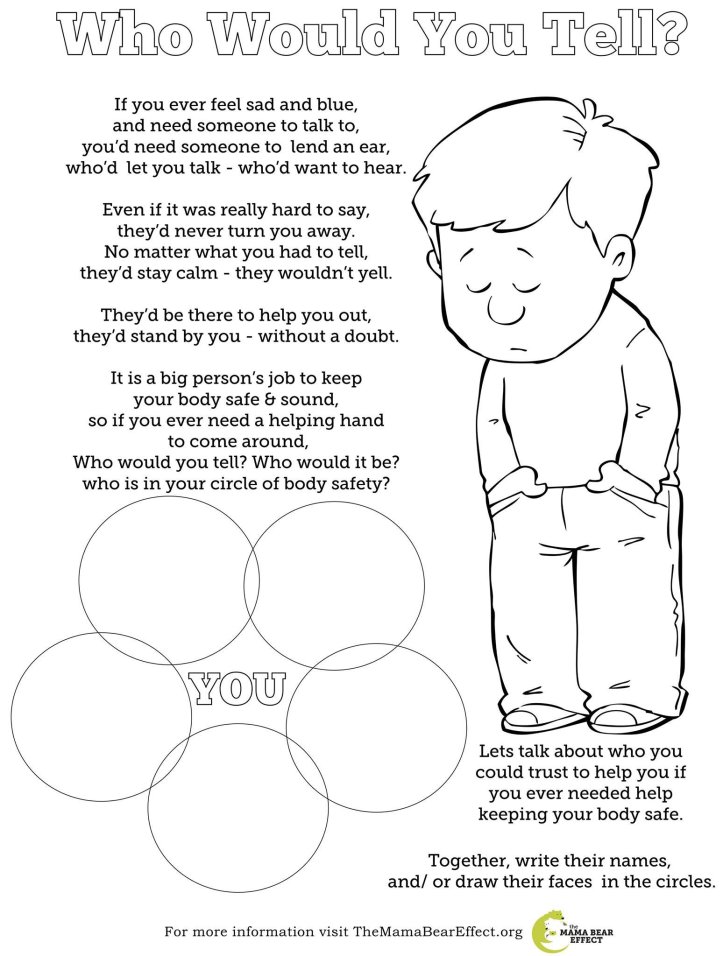
Affirm Innocence-“Sometimes nice people do the wrong thing”While many use the term “monster” to describe sexual abusers, they do not usually come into the life of their victim formed as such. If anything, it’s often quite the opposite – it’s someone they believe loves them and they may love or admire in return – someone that has made them feel special, especially if they are lacking close relationships.Even when sexual activity is introduced into the relationship, not all children will understand the extent of the abuse right away. By the time they do, it may seem too late to tell. You should understand that the feelings of complicity, embarrassment, and guilt makes them afraid to tell. They may feel bound to protect their abuser in fear of what will happen to them. People think that any child would become afraid of their abuser, but the truth is, they may care for this person and fear telling.It’s also important that we not take on a position of violence if someone were to hurt our children, like, “I’d kill anyone that hurt you.” This attitude may make a child even more afraid to tell, because they may not want this person to be hurt or have their protective parent get into trouble. It is important to explain to our children that people that do the wrong thing don’t always look like “bad” people. That even we, as parents, might trust the wrong people. Which is why we must remind them it’s always right to tell and that it’s never too late – we wont be angry or disappointed, we will believe them and listen. This is one of the most difficult lessons for both adults and children to understand, because so often – people do not even suspect abusers, don’t believe victims when they tell, and are too often, quick to forgive & make excuses for abusers because they often are “nice” people, respected by many. This is one of the most difficult lessons for both adults and children to understand, because so often – people do not even suspect abusers, don’t believe victims when they tell, and are too often, quick to forgive & make excuses for abusers because they often are “nice” people, respected by many.
-Sexual Abuse Is Never the Fault of the Child With the mission of protecting children from bearing the shame of abuse, we are very much against the mentality of “No, Go, Tell!”The message that children must say ‘no’, must run away, and must tell right away, puts significant responsibility on the child to react defensively, when research has shown that even adults with combat training cannot overcome the FREEZE response that many victims experience during a sexual assault. That is not to say that we shouldn’t teach children that they can yell ‘no’ and run away, but that it is not their job to do that. Do we want them to come and tell us right away? Absolutely. But if they are confused, afraid, or too ashamed to tell right away it’s more important that they tell us when they can. It is never too late to tell. Children learn more from our actions than our words.The relationship we build with our children is just as important as teaching them body safety – our love, respect, and guidance
serves as a safe space that will benefit them well beyond these early years.
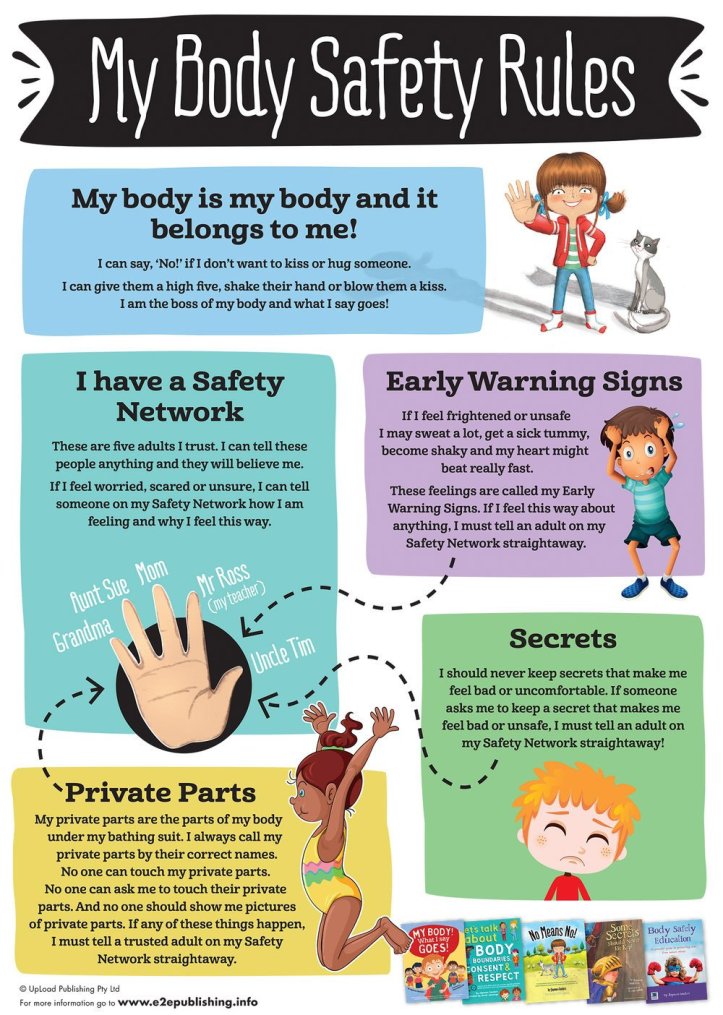
Safety circle: you may just have parents in the safety circle
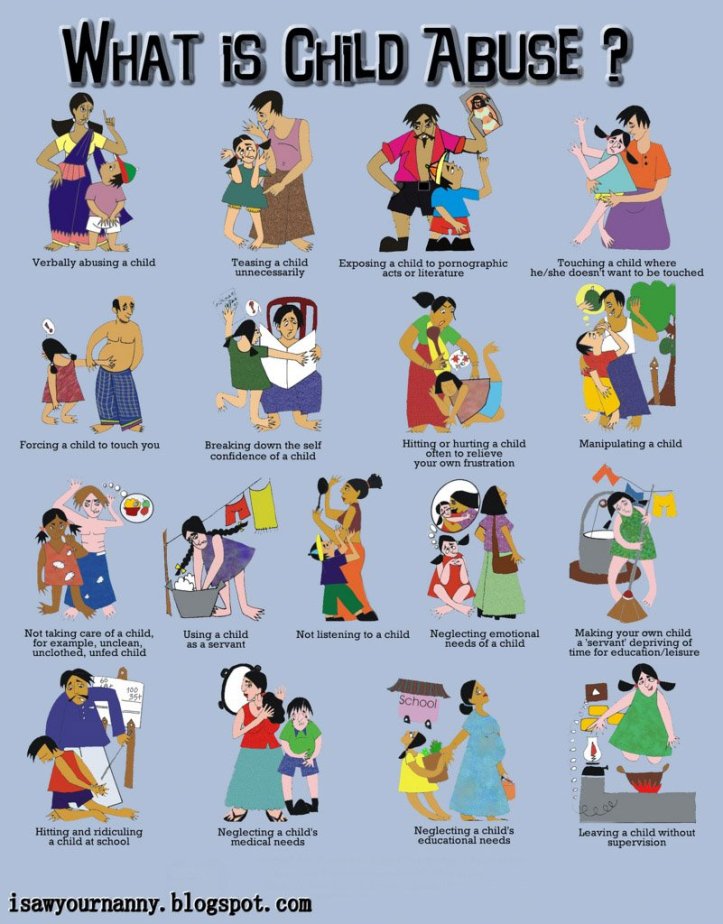
It always pays to nurture our kids mental health. Following are some small but very effective means to do that. Lets make our kids mentally strong

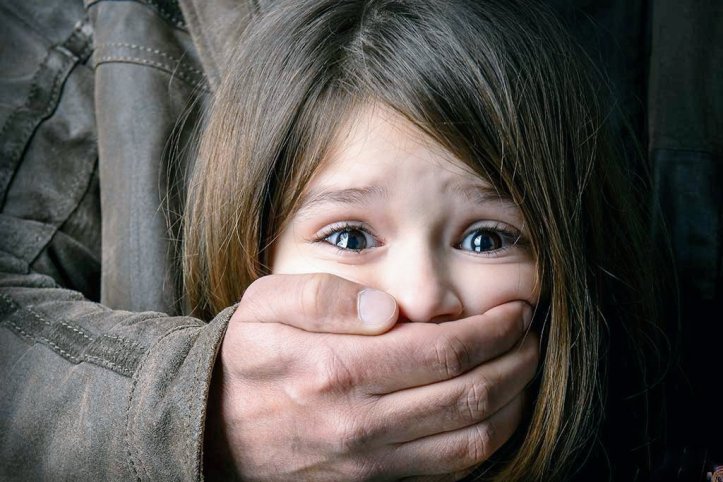
Better safe than sorry!
#StaySafe
#ChildrenUpbringing
#NeverToEarly
#forBothGirlsAndBoys.
#SpreadingAwareness
#sexualAbuse
#childAbuse
#goodTouchBadTouch
#itsNeverYourFault
#alwaysTellYourParents
#noSecretPolicy
#noGiftsFromStrangers
#strangerDanger